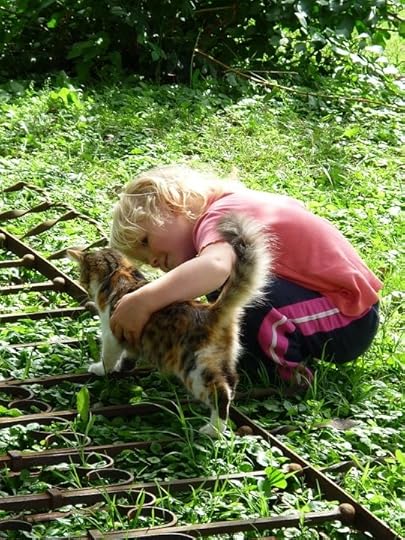Five Ways to Choose the Right Pet
 Animal shelters and pet rescue groups throughout the country take in numerous pets every year. In fact, statistics show that nearly seven million animals enter humane societies, SPCAs, and animal shelters every year; nearly half are killed due to lack of space and low adoption numbers. However, for people who do adopt, there's a plethora of animals from which to choose and so the questions: Which type – dog, cat, guinea pig, rabbit, reptile? What breed or kind? How old? How do you choose the right pet for yourself?
Animal shelters and pet rescue groups throughout the country take in numerous pets every year. In fact, statistics show that nearly seven million animals enter humane societies, SPCAs, and animal shelters every year; nearly half are killed due to lack of space and low adoption numbers. However, for people who do adopt, there's a plethora of animals from which to choose and so the questions: Which type – dog, cat, guinea pig, rabbit, reptile? What breed or kind? How old? How do you choose the right pet for yourself?Here are five ideas:Consider your lifestyle. Are you home a lot or gone? Are you an active person or a couch potato? Do you want an animal that needs to be with you a lot or one that's independent? Do you have time to walk and play with a pet? Do you have children, and if so, what are their ages and how much experience does your family have with pets?Consider the allergy factor. Does anyone in your family have allergies to pet hair/dander? Are you allergic to bird feathers? Even though many people with allergies have pets, it's also a big reason people turn animals into shelters and rescues. If you or someone in your house is severely allergic to animal hair/dander, then consider having a reptile, like a lizard or turtle, or a variety of fish for a beautiful aquarium.Do you expect a life change in the near future, such as moving or having a baby? These are also top reasons people bring animals to the shelter. Keep in mind a pet is a major responsibility and should be a lifetime commitment. Dogs and cats attach themselves to their human families, and it's very traumatic for them to go from living in a home to a shelter situation, behind bars, on cold concrete, amidst other barking dogs and meowing cats. Therefore, don't think of a pet as a temporary resident, but as a member of the family, and if you think you'll be making a major life change in the near future that could cause you to take your pet to a rescue or shelter, postpone adding an animal to your household until your life is more settled.Research the different breeds of dogs and cats and the other types of animals people have for pets. Understand that terriers dig, beagles bay, corgis herd, cats claw, and longhaired felines need regular grooming. Most dogs and cats shed, and bird and hamster cages need regular cleaning. Know what you're in for BEFORE you add a pet to your home. Learn about the personality traits and habits of different breeds. Also recognize the needs of the various types of animals before you adopt.Don't adopt on a whim. Do your homework, ask questions, research, and plan ahead of time to make sure you’re ready. Remember the previous tips about understanding the needs of the animal and the responsibilities of pet ownership. Don't surprise someone with the “gift” of a pet and don't get an animal for yourself or your family without the knowledge base of which pet best fits your life.
The ASPCA (American Society for the Prevention of Cruelty to Animals) provides a list of pros and cons to adding a pet to your home. They offer tips and guidelines for those considering adopting a dog, a cat, a hamster, a guinea pig, a rabbit, or having a fish. View these tips, and other important pet information, at the organization's website: https://www.aspca.org/adopt/adoption-tips/right-pet-you.
So, which pet is the right one? The one that is right for you!

Published on May 16, 2017 05:30
No comments have been added yet.



